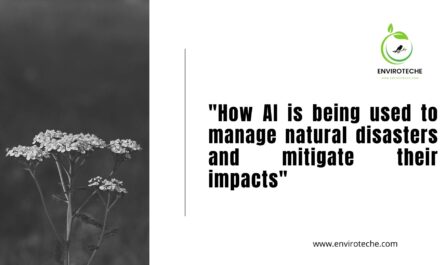
Assessing the Vulnerability of Smallholder Farmers to Climate Change and Soil Pollution
Irfan Haidri1, Qudrat Ullah1
1Department of Environmental Sciences, Government College University Faisalabad
Abstract
Smallholder farmers, particularly in underdeveloped countries, are critical to global food supply. However, they face disproportionate challenges from soil degradation and climate change, which significantly impact their way of life and food security. Therefore, it is crucial to provide an overview of smallholder farming and its contribution to global food production in this context.
Additionally, the unique implications of climate change on smallholder farmers, such as altered rainfall patterns, temperature extremes, and increased frequency of extreme weather events, must be taken into account. Furthermore, a comprehensive understanding of smallholder farmers’ concerns regarding soil pollution, including its sources, forms, and effects on crop yields and soil health, is essential to fully grasp the scope of the problem.
This blog post aims to explore the vulnerability of smallholder farmers to these environmental threats and highlight potential solutions and opportunities for building resilience.
Introduction
Small farmers, due to limited access to resources like land, capital, technology, and knowledge, face challenges when trying to invest in climate-resilient practices and technologies. Consequently, they become more vulnerable to climate-related hazards. Their restricted financial means hinder their capacity to build irrigation systems, make infrastructure modifications, or adopt climate-smart agriculture approaches. Additionally, their heavy reliance on rain-fed agriculture renders them particularly susceptible to changes in rainfall patterns (Nyasimi et al., 2017).
Fluctuations in precipitation, such as droughts or floods, can lead to crop failure, reduced yields, and lost income. The scarcity of irrigation facilities exacerbates their vulnerability to water shortage during dry seasons. Small farmers lack the necessary knowledge and experience to effectively embrace climate-smart agriculture options such as agroforestry, crop diversification, and soil conservation measures.
Furthermore, their struggles in enhancing their adaptability are compounded by the absence of access to agricultural extension services, training programs, and information. Market access poses further challenges for small farmers, restricting their ability to sell their produce at fair prices. Moreover, climate change disrupts market dynamics, resulting in heightened price volatility and diminished market opportunities (Myers et al., 2017).
Factors Influencing Vulnerability
Small farmers, facing a myriad of challenges, are particularly susceptible to the ramifications of climate change. Among the reasons contributing to their vulnerability are poverty and limited resources, which heighten their risk in a socioeconomic context. These farmers find it arduous to adapt to evolving conditions due to their typical lack of financial means to invest in climate-resilient infrastructure and technology.
Moreover, their inability to implement sustainable and adaptive practices stems from technological barriers, encompassing restricted access to modern equipment, information, and farming techniques. Compounding their vulnerability are institutional concerns like weak policies, a dearth of extension services, and limited market access. Governments and institutions frequently fall short in providing small farmers with the necessary resources and assistance to cope with the effects of climate change (Anandajayasekeram,.et al.,2017).
Furthermore, their heavy reliance on rain-fed agriculture as their primary income source renders them particularly sensitive to droughts and shifts in rainfall patterns. In light of these circumstances, it is imperative to address these concerns and offer targeted support in the form of financial aid, technology, knowledge transfer, and policy interventions. Such actions are crucial in reducing susceptibility and enhancing resilience among small farmers confronted with the challenges of climate change.
Building Resilience and Adaptation Strategies
Small farmers must prioritize building resilience and formulating adaptation strategies to effectively cope with the impacts of climate change. To achieve this, it is crucial to emphasize the implementation of climate-smart agricultural practices, including the utilization of drought-tolerant crop varieties, adoption of water-efficient irrigation systems, and implementation of sustainable soil management techniques(Mashizha, 2019).
Additionally, resilience can be enhanced through crop diversification and the integration of agroforestry systems, which reduce vulnerability to extreme weather events and generate additional revenue streams. It is of utmost importance to invest in farmer education and capacity-building programs, equipping small farmers with knowledge and skills in climate-smart practices, weather forecasting, and risk management. This empowers them to make informed decisions and adapt to evolving conditions.
Furthermore, facilitating access to affordable finance and insurance options can mitigate climate-related hazards and aid in recovery from losses (Donatti et al., 2019). Strengthening farmer cooperatives and establishing direct connections between producers and buyers are vital for fostering partnerships, improving market access, and enhancing resilience as markets stabilize and prices fluctuate.
Policy and Institutional Support
The detrimental consequences of climate change on the livelihoods and food security of small farmers are especially dangerous. Therefore, critical legal and institutional support is needed to assist small farmers in coping with and adapting to climate change’s effects. Effective policies can provide access to knowledge, markets, as well as financial and technical resources. Governments should prioritize the implementation of climate-smart technology, such as efficient irrigation systems, agroforestry, and resilient crop varieties (Singh, 2020).
Moreover, aiding small farmers through training programs and extension services can enhance their capacity to implement adaptive strategies. Successful implementation necessitates collaboration across institutions, where governments, academic institutions, and non-governmental organizations must work together to develop and expand early warning systems and climate-smart farming methods(Asfaw et al., 2019).
Technological barriers
Small farmers, due to their inability to utilize climatic information and forecasting tools for informed decision-making regarding crop selection, planting season timing, and resource allocation, are more susceptible to resource waste and yield losses resulting from inaccurate or delayed information (Bedeke et al., 2019). Moreover, the exorbitant cost associated with climate-smart technologies poses a significant obstacle for small farmers, impeding their access to sophisticated irrigation systems, precision farming tools, and crop varieties resistant to adverse weather conditions—key factors that could enhance their adaptive capacity.
This financial constraint not only heightens their vulnerability but also hampers their ability to mitigate the impacts of soil degradation and climate change. Additionally, inadequate infrastructure, including intermittent electricity supply and unreliable internet connectivity, further restricts small farmers’ access to digital tools and online information, preventing them from harnessing the potential of agricultural apps, remote sensing technologies, and internet marketplaces, all of which have the potential to augment their production and profitability (Lincoln Lenderking et al., 2021).
Conclusion
Soil deterioration and climate change exert a significant influence on food security and agricultural productivity. The adverse impacts encompass rising temperatures, altered rainfall patterns, and a heightened occurrence of extreme weather events, all of which hinder crop development and productivity. Moreover, the excessive use of chemicals and the pollution of soil due to industrial activities contribute to the degradation of soil quality, resulting in reduced crop yields.
Consequently, the global food supply and the livelihoods of farmers are put at risk by the cumulative effects of these factors. To ensure food security, it is imperative to adopt sustainable agricultural strategies that mitigate climate change, limit soil pollution, and enhance resilience. Achieving a sustainable and dependable food supply necessitates substantial investments in research, technology, and policy interventions to address these concerns.
References
Anandajayasekeram, P. (2008). Concepts and practices in agricultural extension in developing countries: A source book. ILRI (aka ILCA and ILRAD).
Asfaw, A., Simane, B., Bantider, A., & Hassen, A. (2019). Determinants in the adoption of climate change adaptation strategies: evidence from rainfed-dependent smallholder farmers in north-central Ethiopia (Woleka sub-basin). Environment, Development and Sustainability, 21, 2535–2565.
Bedeke, S., Vanhove, W., Gezahegn, M., Natarajan, K., & Van Damme, P. (2019). Adoption of climate change adaptation strategies by maize-dependent smallholders in Ethiopia. NJAS-Wageningen Journal of Life Sciences, 88, 96–104.
Donatti, C. I., Harvey, C. A., Martinez-Rodriguez, M. R., Vignola, R., & Rodriguez, C. M. (2019). Vulnerability of smallholder farmers to climate change in Central America and Mexico: current knowledge and research gaps. Climate and Development, 11(3), 264–286.
Lincoln Lenderking, H., Robinson, S., & Carlson, G. (2021). Climate change and food security in Caribbean small island developing states: challenges and strategies. International Journal of Sustainable Development & World Ecology, 28(3), 238–245.
Mashizha, T. M. (2019). Building adaptive capacity: Reducing the climate vulnerability of smallholder farmers in Zimbabwe. Business Strategy & Development, 2(3), 166–172.
Myers, S. S., Smith, M. R., Guth, S., Golden, C. D., Vaitla, B., Mueller, N. D., … & Huybers, P. (2017). Climate change and global food systems: potential impacts on food security and undernutrition. Annual review of public health, 38, 259-277.
Nyasimi, M., Kimeli, P., Sayula, G., Radeny, M., Kinyangi, J., & Mungai, C. (2017). Adoption and dissemination pathways for climate-smart agriculture technologies and practices for climate-resilient livelihoods in Lushoto, Northeast Tanzania. Climate, 5(3), 63.
Singh, S. (2020). Farmers’ perception of climate change and adaptation decisions: A micro-level evidence from Bundelkhand Region, India. Ecological Indicators, 116, 106475.
Check Other Schlorships:

